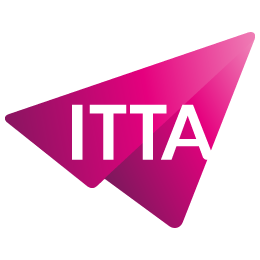Home > Trainings > IT Pro > Audit and Cybersecurity > Microsoft Cybersecurity Architect (SC-100)
In a digital world where threats are constantly evolving, the cybersecurity architect plays a crucial role. The Microsoft Cybersecurity Architect (SC-100) training prepares you to design robust strategies tailored to modern environments. This expert-level program is designed to give you an advanced understanding of zero trust principles, risk governance, security operations, and the protection of data and applications.
Built around Microsoft best practices, this course is an essential asset for any expert seeking to deepen their skills. You will learn how to align security strategies with key reference frameworks while mastering the specific requirements of SaaS, PaaS, and IaaS infrastructures. Through a methodological and practical approach, you will be able to design comprehensive, resilient security architectures that meet regulatory standards.
Designing, evaluating, and enhancing robust cybersecurity architectures is a strategic challenge for all modern organizations. With the Microsoft Cybersecurity Architect (SC-100) training, you will be ready to meet this challenge and help organizations achieve optimal security. This comprehensive course will enable you to master all aspects of a security architecture, from initial design to compliance validation, including advanced protection of data and applications in hybrid and multicloud environments.
Module 1: Introduction to Zero Trust frameworks and best practices
Module 2: Designing security solutions aligned with the Cloud Adoption Framework (CAF) and the Well-Architected Framework (WAF)
Module 3: Designing solutions aligned with MCRA (Microsoft Cybersecurity Reference Architecture) and MCSB (Microsoft Cloud Security Benchmark)
Module 4: Designing a resilience strategy against ransomware and other attacks following Microsoft security best practices
Module 5: Case study: Designing solutions aligned with security best practices and priorities
Module 6: Designing regulatory compliance solutions
Module 7: Designing identity and access management solutions
Module 8: Designing solutions to secure privileged access
Module 9: Designing security operations solutions
Module 10: Case study: Designing features related to security operations, identities, and compliance
Module 11: Designing solutions to secure Microsoft 365
Module 12: Designing application security solutions
Module 13: Designing solutions to secure organizational data
Module 14: Case study: Designing security solutions for applications and data
Module 15: Specifying requirements to secure SaaS, PaaS, and IaaS services
Module 16: Designing solutions for security posture management in hybrid and multicloud environments
Module 17: Designing solutions to secure server and client endpoints
Module 18: Designing network security solutions
Module 19: Case study: Designing infrastructure security solutions
In a context where companies are moving towards increasingly hybrid and multicloud infrastructures, cybersecurity is no longer optional. It becomes a strategic component of the overall IT architecture. This is precisely where the Microsoft Cybersecurity Architect (SC-100) training makes sense. It doesn’t just teach how to secure environments — it teaches how to build robust infrastructures, aligned with recognized standards, capable of evolving with current and future threats.
Mastering cybersecurity requires more than just theoretical knowledge. This course connects strategic concepts with operational deployments. Through an approach based on frameworks such as the Cloud Adoption Framework and the Well-Architected Framework, participants develop comprehensive strategies focused on resilience, compliance, and agility.
An organization’s ability to face attacks depends on the quality of its security architecture. This course teaches how to anticipate threats, not just by detecting potential vulnerabilities, but by building environments that can adapt to modern cyber threats, including ransomware and insider attacks. Business resilience thus becomes a key lever to ensure business continuity.
A distinctive feature of this training is its focus on prevention, particularly by specifying security requirements for SaaS, PaaS, and IaaS services, as well as for IoT and multicloud environments. The goal is clear: to secure not only traditional infrastructures but also new forms of critical infrastructures, often exposed to complex and targeted attacks.
Data protection regulations are multiplying and becoming increasingly complex. This course prepares professionals to effectively translate compliance requirements into real security controls. Using tools such as Microsoft Purview and Azure Policy, they will be able to align architectures with regulatory requirements and protect sensitive data, both on-premises and in the cloud.
Identity and access management is also a major pillar of the program. It often represents the first line of defense against cyberattacks. By securing privileged access, designing modern authentication and authorization strategies, and integrating Zero Trust principles, cybersecurity architects significantly strengthen organizations’ overall security posture.
Beyond implementing security solutions, the real challenge is to ensure their long-term effectiveness. The course teaches how to continuously assess, monitor, and optimize security posture using tools like Microsoft Defender for Cloud. It also covers advanced incident detection and response strategies, essential for reinforcing an organization’s proactive defense capabilities.
Thanks to practical exercises, real-world case studies, and complex scenarios, participants will develop a critical, adaptable approach to emerging digital risks. The goal is not just to react to incidents but to build systems designed from the ground up to withstand and strengthen after each attack attempt.
Is prior experience required before taking the SC-100 training?
Yes, it is strongly recommended to have prior experience in cloud cybersecurity and to have passed a related certification such as AZ-500, SC-200, or SC-300.
Which Microsoft tools and services are covered in the course?
The training covers Microsoft Defender for Cloud, Microsoft Purview, Microsoft Entra ID, Microsoft Copilot, and Azure Policy for compliance and security management.
Does this training prepare for a cybersecurity leadership role?
Yes, it prepares participants for strategic roles where designing, assessing, and optimizing security architectures are primary responsibilities.
Are multicloud aspects covered in the training?
Yes, a significant part of the program is dedicated to securing hybrid and multicloud environments, as well as integrating Azure Arc for centralized management.

Nous utilisons des cookies afin de vous garantir une expérience de navigation fluide, agréable et entièrement sécurisée sur notre site. Ces cookies nous permettent d’analyser et d’améliorer nos services en continu, afin de mieux répondre à vos attentes.
Monday to Friday
8:30 AM to 6:00 PM
Tel. 058 307 73 00
ITTA
Route des jeunes 35
1227 Carouge, Suisse
Monday to Friday, from 8:30 am to 06:00 pm.